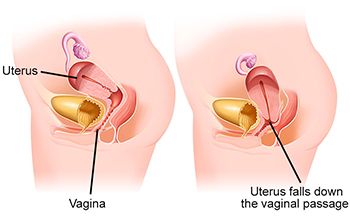A uterine prolapse may have no symptoms in the early stages, and if the condition is caught then, treatment is much simpler. But if the condition remains unchecked, it can reach a point where your uterus protrudes out of your vagina. Don’t let it get that bad. Call today for an appointment at Century Medical and Dental Center in Brooklyn.

Your pelvic floor muscles and ligaments keep several organs in their proper place. The uterus may shift and slip into — or protrude out of — your vagina if these muscles weaken or the ligaments stretch too much. At that point, the tissue no longer provides the support your uterus needs to stay in place, and you may suffer from a uterine prolapse.
Mild cases of uterine prolapse may require no treatment. On the other hand, a prolapsed uterus may inhibit your sexual activity and prevent you from becoming pregnant. If the uterus protrudes out of your vagina and becomes irritated or uncomfortable, you need treatment from a skilled gynecologist at Century Medical and Dental Center in Brooklyn.
Most pelvic prolapse conditions involve an organ slipping out of its normal place into your vagina. When this happens with your uterus, it’s called a uterine prolapse. All types of prolapse events compromise your vagina and cause a prolapsed vaginal wall. Other types of prolapse conditions include:
Many women report that their problems are less frustrating in the morning and worsen throughout the day. More moderate or severe cases may exhibit:
Because uterine prolapse occurs in stages, your symptoms develop slowly. The four stages of uterine prolapse are:
A wall of muscle and ligaments line your pelvic floor. Any condition or event that weakens these muscles can cause prolapsed vagina or other organ prolapse conditions. These include:
Other risk factors include a family history of prolapse conditions, getting older or having Caucasian or Hispanic lineage. The primary concern regarding uterine prolapse — besides the pain and discomfort — is that it can displace part of the vaginal wall, occasionally leading to sores from rubbing on clothing. This is called a prolapsed vaginal wall.
At a consultation, your Brooklyn gynecologist performs a pelvic exam to check the position of your vagina, cervix, uterus and other pelvic organs. Discuss any incontinence or constipation you’re experiencing. Also talk about any digestive or sexual concerns, even if they seem embarrassing. Your doctor understands and wants to resolve your symptoms.
Your treatment options depend on the severity of the prolapse. Some possibilities include:
“Friendly doctors and staff! Office was clean and comfortable. Doctor was caring and knowledgeable, taking time to really listen to me and answer all my questions.” - Katie Thigpen
200 Livingston Str,
Brooklyn, NY 11201
908 reviews
770 Flatbush Ave
Brooklyn, NY 11226
234 reviews
827 11th Ave
Manhattan, NY 10019
88 reviews
260 Ave X
Brooklyn, NY 11223
261 reviews
180 Myrtle Ave
Brooklyn, NY 11201
90 reviews
2315 3rd Ave
New York, NY 10035
40 reviews
Once you’ve addressed your prolapse, certain habits keep your pelvic muscles strong so you don’t experience another episode. Some of these tips can even provide relief from mild cases of prolapse. Change your daily routine to include:
If you need more advice or wish to be examined for a possible prolapse, contact practitioners in Brooklyn at Century Medical and Dental Center . Having multiple medical specialties in one place makes it easier for you to get the care you need.
Century Medical and Dental Center is an accredited healthcare facility in NY that operates in accordance with Article 28, a public health law. This law regulates and recognizes accreditation for public healthcare facilities, ensuring they are licensed and operated correctly. By undergoing the Article 28 process and achieving accreditation, Century Medical and Dental Center demonstrates its commitment to meeting the highest standards of care.
As a multidisciplinary medical center, we have highly qualified doctors, nurses, and support staff who are working hard to provide the best medical care to patients in Manhattan, NY, Brooklyn, NY, and Bronx, NY including Brooklyn Heights, Dumbo, Prospect Heights, Park Slope, Clinton Hill, Boerum Hill, Red Hook, Harlem, Gravesneck, Flatbush, and Bedford-Stuyvesant.